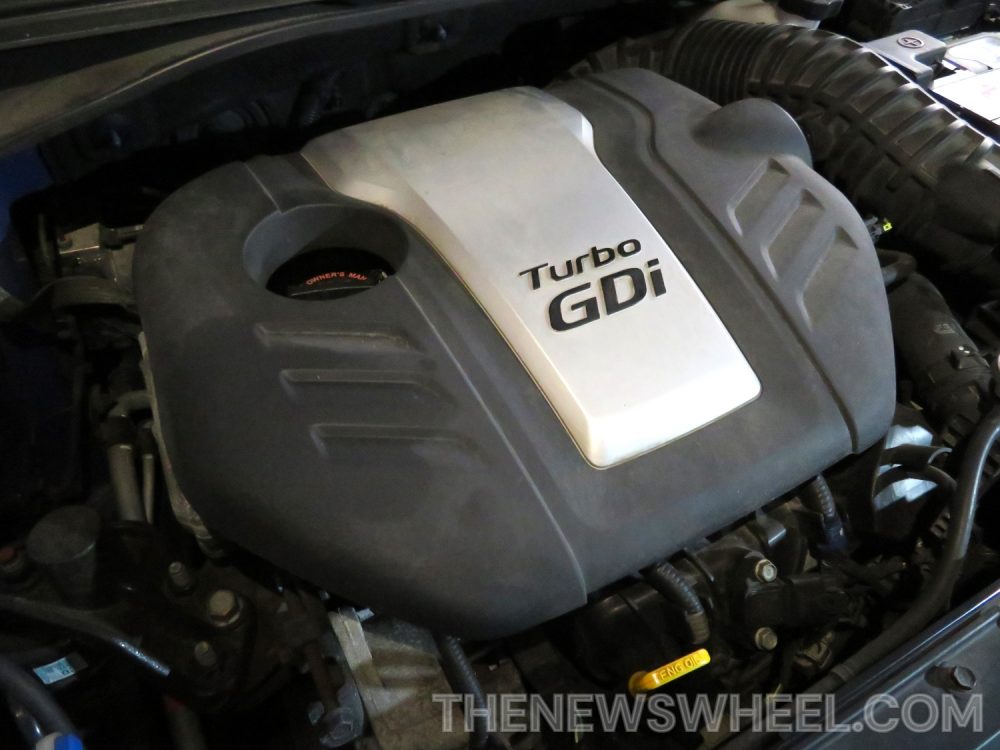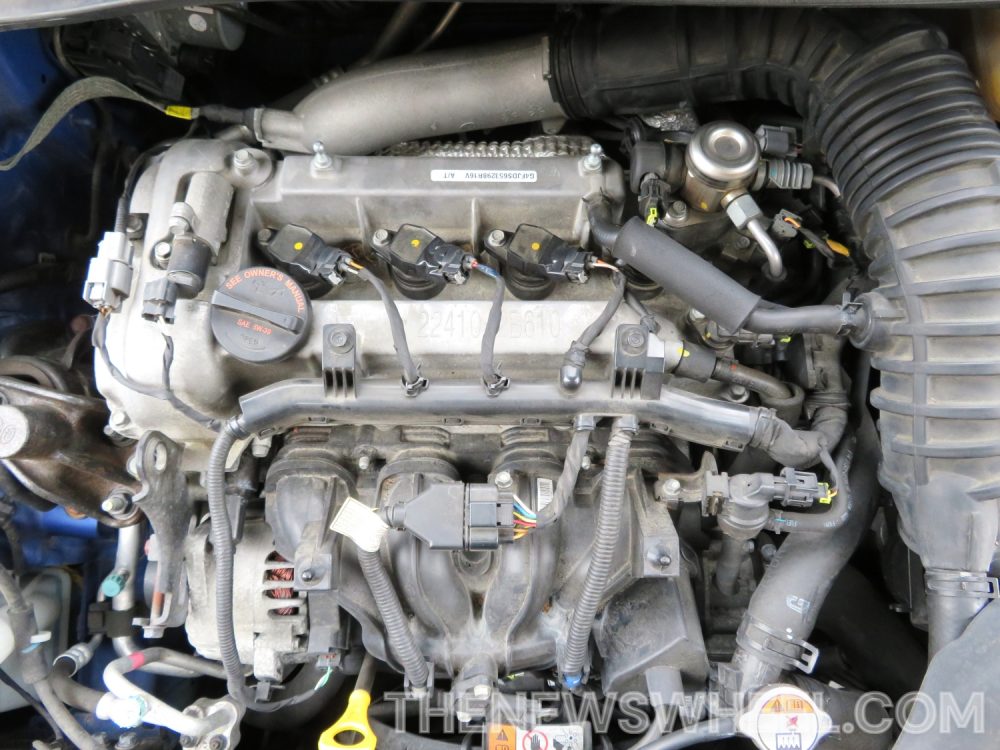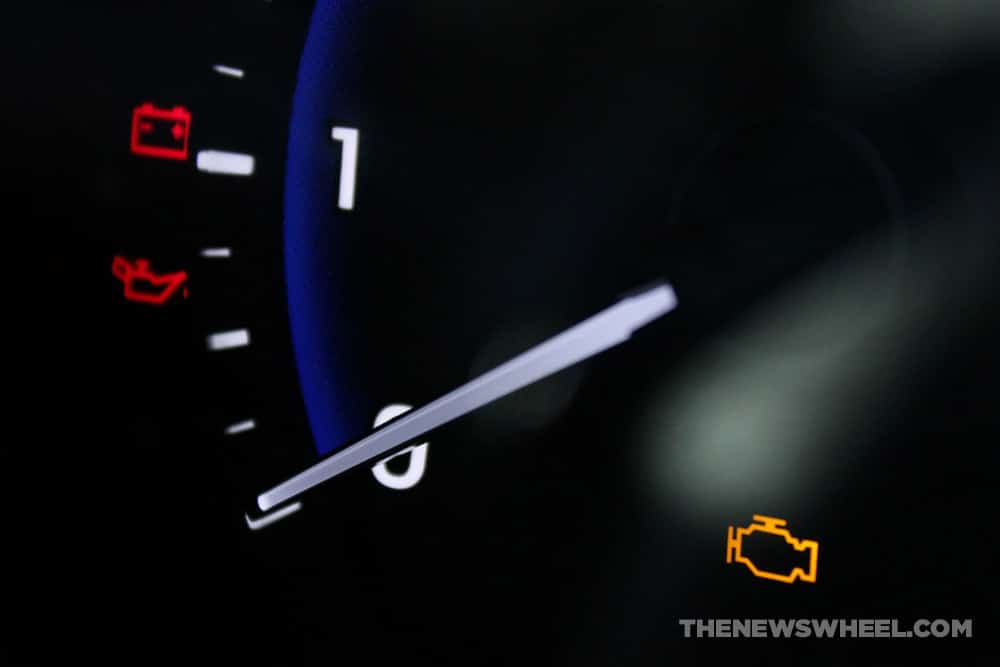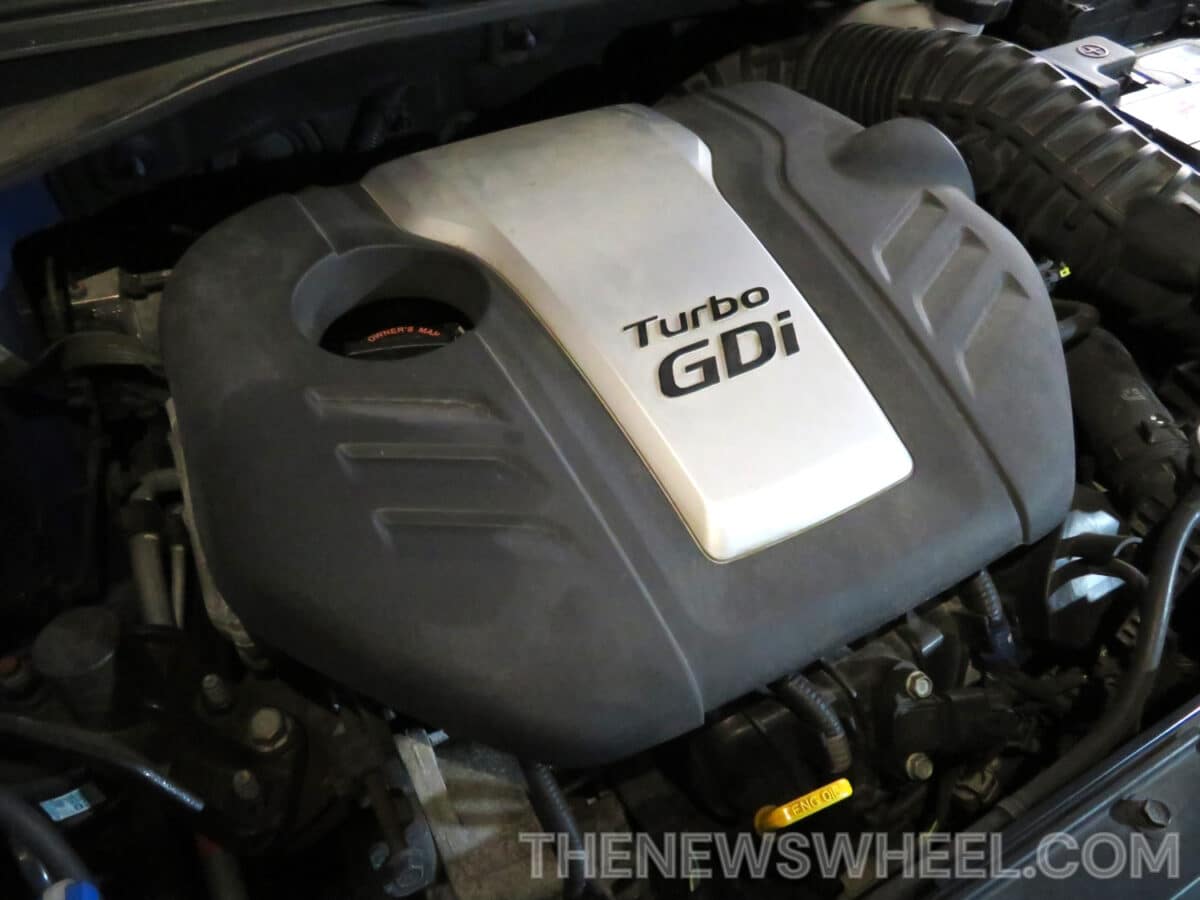
Do you drive a car with a GDI? Are you aware of the maintenance needs and common problems that GDI engines face? When was the last time it had a carbon cleaning? Do you even know what GDI means?
These were all questions that I recently faced regarding my Hyundai Veloster Turbo when its oxygen sensor needed to be replaced for the second time in four years. The cause? An excess of carbon that coated the part and caused it to malfunction.
The Hyundai Veloster is one of many vehicles on the road that require regular carbon cleanings because of their direct-injection engines. Many people own cars with GDI today and don’t even realize this is happening right under their noses. So here’s a crash course in GDI and the importance of carbon cleanings.
Learn More About Engines: What are the differences between inline and V-shaped engines?
Carbon buildup is closely linked to the way fuel is added to an engine. Excessive carbon buildup is most common in models with gasoline direct injection (GDI) engines. This means that fuel is added directly to the combustion chamber, as opposed to traditional port fuel injection (PFI) motors that introduce gasoline in the intake port. Carbon deposits are left by hot oil vapors that cool down as they waft through the intake valves.
When an engine uses GDI and a turbocharger together, that’s a Turbocharged Stratified Injection (TSI) design, which is what my Veloster Turbo has under the hood.
The benefit of a GDI design is that fuel usage is more efficient and results in less waste and cleaner emissions. The drawback is that carbon will gradually accumulate on the intake valves because nothing is rinsing the backs of them (like the fuel does in PFI motors). Over time, this thick goo cakes onto the valve, inhibiting it from opening and closing smoothly.

As the carbon that is caked onto the intake valves starts clogging up their movement, the deposits can even clog up the cylinder itself. From there, other connected parts can become soiled and fail, such as the oxygen sensor, particulate filters, and catalytic converter. Your car might even need a new engine!
You will have to read your car’s owner’s manual to determine if it’s a model with a GDI engine or search its specs online. In general, if your vehicle was produced by GM, Ford, BMW, VW, Audi, Mazda, Hyundai, Kia, Nissan or Honda, there’s a possibility that you’re driving a GDI-equipped mode — especially between 2007-2016 but even on current models. That’s because these are automakers who have used GDI designs most prominently across their lineups. Ever heard of Ford EcoBoost? That’s turbo-direct-injection at work.
In recent years, automakers have begun using “dual fuel injection” or “multi-point injection” systems as solutions to this issue. This approach incorporates both direct and port methods. Why? Injecting fuel before and after the intake valves provides the increased efficiency and performance of GDI with the cleansing rinse of the PFI method.

Common symptoms of an engine in need of carbon cleaning include:
- Rough idling
- Weak acceleration
- Engine misfires
- Noticeable drop in MPGs
- Erratic RPMs, including lagging or surging
- A check-engine light appearing
- Excessive soot on the tailpipes
- Knocking or other odd noises from the engine
Even if you aren’t noticing these signs, you should still have a mechanic assess your vehicle for carbon buildup if it has a GDI engine and you’ve surpassed 75,000 miles.
Your car may need a carbon cleaning sooner than that — even at 30,000-50,000 miles — if regular vehicle maintenance (like oil changes) has been neglected or you drive at low speeds daily.
When a mechanic performs a carbon cleaning, they will pop the hood and remove the intake manifold to access the engine’s valves, where that disgusting combustion byproduct collects.
Depending on their approach, the mechanic will either perform a chemical cleanse (using a cleaning solution) or a manual removal. While the former is quicker and cheaper, the latter is more effective because they will use tools to soak, scrape, suck, and blast the valves to thoroughly remove carbon deposits far better than any rinse could.
You can purchase a DIY kit to do this work yourself if you feel confident working on your car and removing parts to access the valves. Or, you can pay a professional at an auto shop to do the work for you.

To slow the buildup of carbon in your car’s engine, you should:
- Refuel at Top Tier™ gas stations: Dirty gas will cause problems in a GDI, so only fill up at reputable chains that sell high-quality, clean gasoline.
- Drive at high speeds habitually: Carbon buildup occurs more rapidly if you only drive 10-15-minute low-speed routes in town. Spend at least a half hour on the highway every 1-2 weeks to get RPMs around 4,500-5,000. This heats up the valves to help “blow out” some carbon before it sets.
- Keep up with regular maintenance: Stick to the recommended service intervals for motor oil changes and the replacements of old oil filters, engine air filters, and spark plugs. The more these components get gunked up, the more carbon will collect in your car. And, make sure you use good-quality oil!
- Add preventative chemicals to your car: Many mechanics recommend pour-in solutions at least twice a year that clean your vehicle’s systems. These include fuel additives (like BG Fuel System Cleaner) and intake solvents that rinse the inlet valves (like CRC Intake Valve Treatment).
- Install a catch can: You can install this device to collect oil vapor and filter out carbon contaminants before it reenters the engine. Research the most effective product and drain the filter frequently.
These are preventative habits you can initiate to slow carbon accrual in your car, but remember that they aren’t substitutes for manual carbon cleanings if your vehicle uses GDI. Schedule a carbon cleanse every 30,000-45,000 miles so mechanics can use specialized tools to remove carbon buildup in the intake valves of your car’s engine. A few hundred dollars every 2-3 years can save you thousands of dollars down the road — while you enjoy better engine performance every day.
Aaron is unashamed to be a native Clevelander and the proud driver of a Hyundai Veloster Turbo (which recently replaced his 1995 Saturn SC-2). He gleefully utilizes his background in theater, literature, and communication to dramatically recite his own articles to nearby youth. Mr. Widmar happily resides in Dayton, Ohio with his magnificent wife, Vicki, but is often on the road with her exploring new destinations. Aaron has high aspirations for his writing career but often gets distracted pondering the profound nature of the human condition and forgets what he was writing… See more articles by Aaron.



